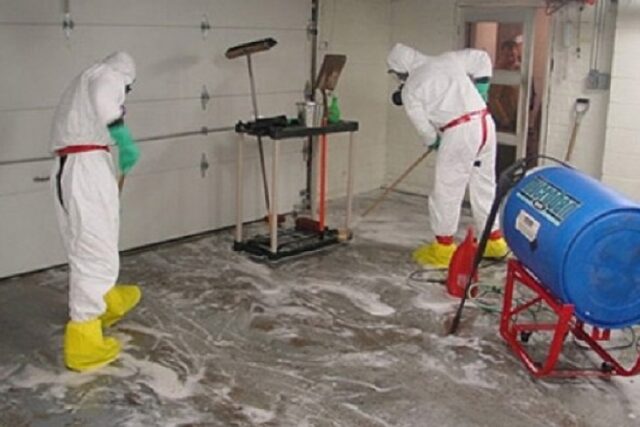A sewage backup in your home or business is more than just an unpleasant situation—it’s a hazardous event that requires immediate attention. Because of the bacteria, viruses, and parasites they carry, sewage backups present major health risks. Handling the cleanup properly is essential not only for restoring your property but also for protecting your health. For those in need of sewage backup cleanup in Charlotte, enlisting the help of a professional restoration service ensures thorough removal, cleaning, and sanitation to protect both property and health. In this article, we’ll walk you through the steps to safely clean up a sewage backup and how to prevent future occurrences.
Table of Contents
Prioritize Safety
The first rule in sewage cleanup is safety first. Sewage water is considered contaminated (Category 3 water) and can contain harmful pathogens that pose serious health risks. Before you begin the cleanup process, make sure to take the following precautions:
- Turn Off The Power: Electricity and water don’t mix. To prevent electrical hazards, make sure the impacted area’s power supply is turned off.
- Wear Protective Gear: Sewage water can carry bacteria, viruses, and other contaminants. To prevent coming into direct contact with the sewage, it is imperative to wear a face mask, waterproof boots, rubber gloves, and eye protection.
- Ventilate The Area: If possible, open windows and doors to allow fresh air circulation. Proper ventilation reduces the accumulation of harmful gases that may arise from sewage.
Stop The Source Of The Backup
Before starting any cleanup, stop the source of the sewage backup. Whether the issue stems from a blocked pipe, clogged drain, or a sewer line obstruction, it’s critical to address the source to prevent further damage.
If the backup is minor and confined to a single drain or toilet, you may be able to clear the blockage using a plunger or a drain snake. For more significant backups or issues that involve the main sewer line, it’s best to call in a professional plumber to ensure the problem is properly fixed and that the risk of recurrence is minimized.
Remove Contaminated Water
After stopping the source of the backup, the next step is to remove the contaminated water. This must be completed as soon as possible to lower the chance of mold growth and stop additional harm to your property’s structure.
- Use A Pump Or Wet Vacuum: For substantial sewage backups, you may need a submersible pump or a professional wet vacuum to remove the standing water.
- Dispose Of Water Safely: Make sure the wastewater is disposed of properly according to your local health and safety regulations. This may involve working with a professional sewage cleanup service to ensure it’s handled appropriately.
Clean And Disinfect All Affected Areas
- Scrub Surfaces: Clean all surfaces that came in contact with sewage water using a detergent solution. Scrub floors, walls, and any furniture that can be salvaged.
- Disinfect: After cleaning, use a disinfectant to kill any remaining pathogens. Ensure the disinfectant is safe for the materials you’re cleaning and is effective against bacteria, viruses, and mold.
- Remove Contaminated Materials: Any porous materials such as carpets, insulation, or drywall that have been contaminated by sewage should be discarded. These materials can absorb sewage and harbor harmful bacteria, making them impossible to clean effectively.
Repair And Restore
You might need to replace or repair any damaged items on your property after the cleaning is finished. This could include replacing flooring, walls, and insulation. Should the sewage backup have been severe enough to affect your plumbing or structural components, you may want to consider hiring a professional contractor to ensure that repairs are done precisely and safely.
Prevent Future Sewage Backups
- Regularly Maintain Plumbing: Schedule annual plumbing inspections to ensure pipes are in good condition. To avoid clogs, have your drains cleaned on a regular basis.
- Install Backflow Prevention Devices: In areas prone to heavy rainfall or flooding, installing a backflow valve on your main sewer line can prevent sewage from flowing back into your property.
- Avoid Flushing Inappropriate Items: Never flush paper towels, wipes, or non-biodegradable materials down the toilet. These items can cause blockages and contribute to backups.
- Check The Slope Of The Property: Ensure that your property is graded correctly so that water flows away from the foundation. Proper drainage can reduce the chances of flooding and sewer backups.
Conclusion
A sewage backup is a stressful and hazardous situation that requires immediate and effective action. By prioritizing safety, addressing the source of the problem, thoroughly cleaning and disinfecting affected areas, and taking preventative measures, you can handle the cleanup safely and minimize the risk of recurrence.








